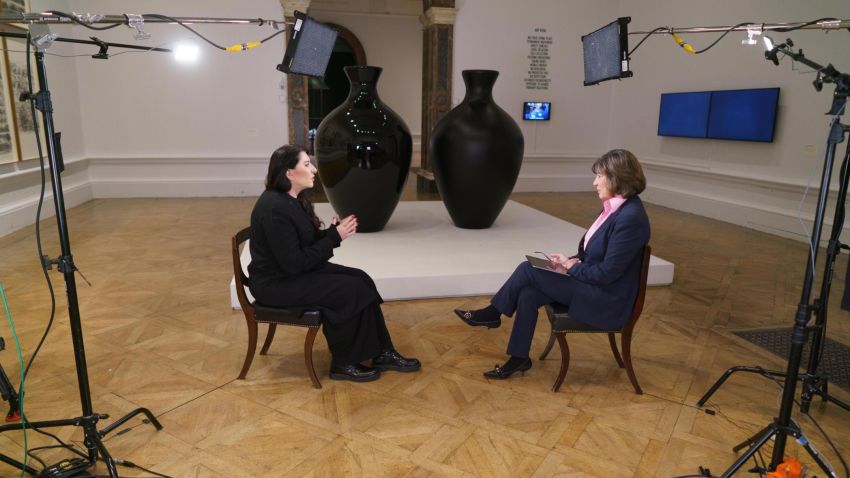Editor’s Note: See highlights from CNN Chief International Anchor Christiane Amanpour’s interview, which aired Tuesday on “Amanpour,” above.
London, UK (CNN) — For an artist whose work focuses so heavily on mortality, Marina Abramović’s joie de vivre may come as something of a surprise.
She appeared giddy as she roamed the main galleries at London’s Royal Academy of Arts, which is hosting a major retrospective of her five-decade career. Speaking to CNN’s Christiane Amanpour, the Serbian artist sometimes known as “the godmother of performance art” said she is “hilarious in real life.”
“I’m honestly ready to (do) stand-up comedy,” she joked, explaining how her outlook was shaped by an embolism that nearly killed her earlier this year: “I need to laugh.”
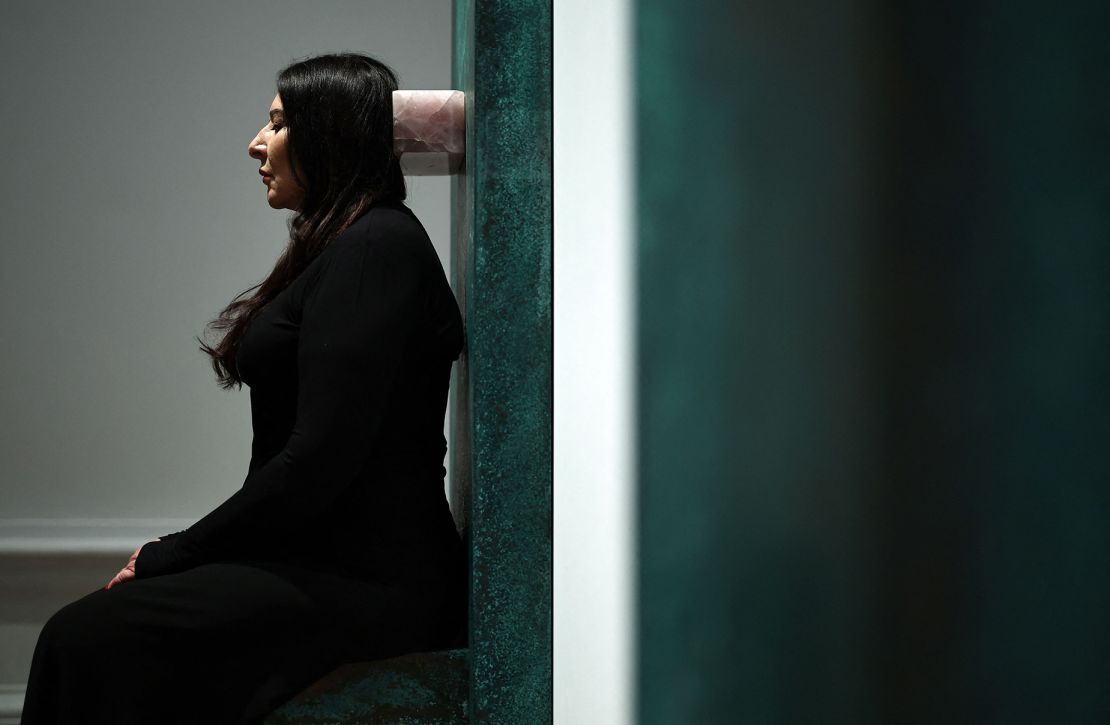
But a jovial disposition doesn’t stop Abramović from thinking about death “all the time,” she said while contemplating a video of herself in “Nude with Skeleton,” a 2002 performance in which she laid naked with a skeleton on top of her. The piece is one of four being reperformed live at the exhibition, which runs until January.
“I just want to know how it feels,” she remarked peacefully, referring to the “transition” from life to death.
Overcoming fear
Abramović, who has just turned 77, describes her body as her tool. She has tested it in almost every way possible in the name of art, enduring vast amounts of pain and once even losing consciousness during a performance.
She told Amanpour her work is all about daring to do things that scare her and showing “you can overcome the fear of pain, the fear of dying, the fear of suffering.”
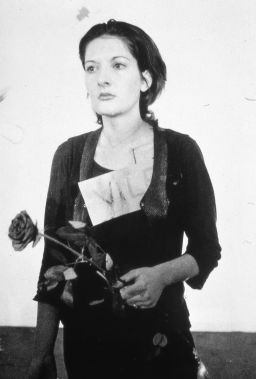
Her creations also encourage — demand, even — viewers to engage with them, producing fleeting, liminal moments that erode the distinction between artist and audience. For a 1974 performance piece titled “Rhythm 0,” Abramović placed dozens of objects on a table in a gallery in Naples, Italy and instructed the audience to use them on her “as desired.”
“(In) the first one or two hours nothing really happened,” she said. But it soon turned violent, with people ripping off her shirt, cutting her skin and even pointing a loaded gun at her neck. She realizes now that she could have been killed.
“Imponderabilia,” first staged in 1977, is another exploration of the body and human relations. In its original iteration, Abramović and her then-lover Frank Uwe Laysiepen (the late German artist known as Ulay) faced each other naked in the doorway of a museum, requiring visitors to squeeze between them to enter. The work was intended to remind viewers that without artists there would be no museums.
“We wanted to be, in a very poetical way, the door of the museum,” Abramović explained.
Restaging “Imponderabilia” at the Royal Academy — this time with the help of two nude models — the artist agreed to offer a side door to visitors looking to bypass the experience. She considers the concession a result of “restrictions” facing artists today.
“We had (a) radical way of doing stuff, which now, because of political correctness and so on, we are not able to do anymore,” she lamented.
Abramović and Ulay’s romance produced more than a decade of artistic collaborations. Their story was immortalized in their 1988 performance “The Lovers,” in which the couple initially planned to walk the Great Wall of China from opposite ends and get married once they met in the middle.
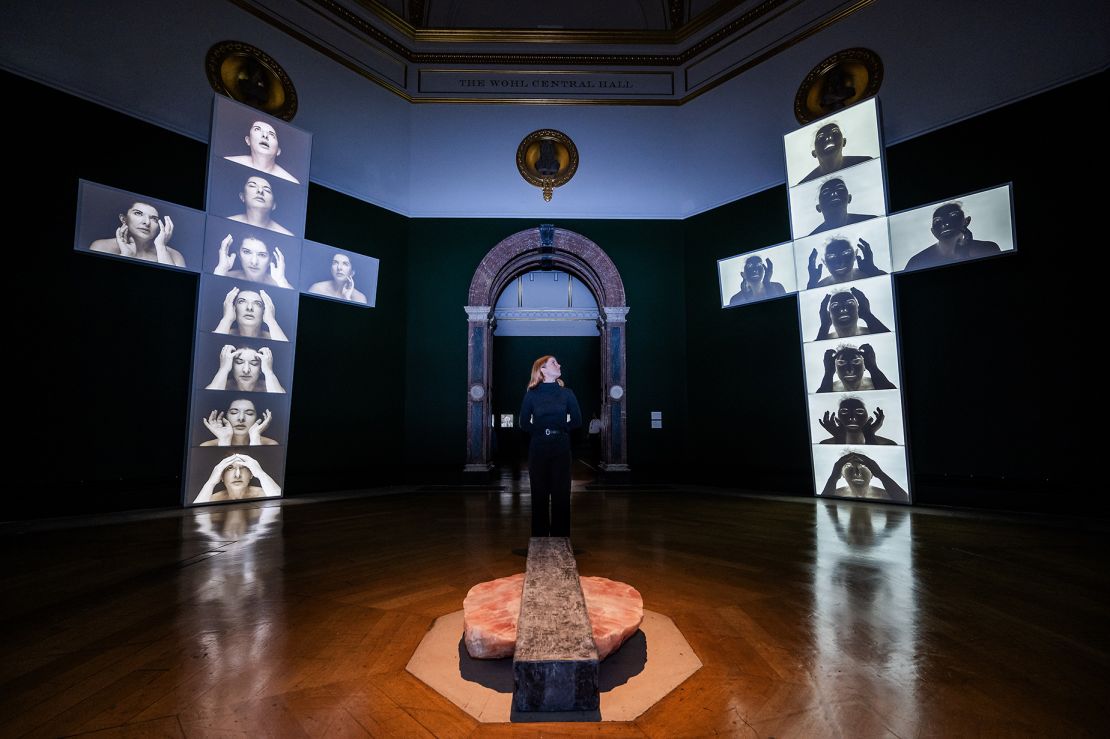
But it took several years for Chinese authorities to approve the plan, by which time they had grown apart.
“We never give up on anything,” Abramović recounted, adding that they decided to reframe their intentions for the piece: “Instead of marrying, we’re going to say goodbye.”
They walked for 90 days and documented the experience. “It was incredibly emotional,” the artist told Amanpour.
The artist is present
After parting ways on the Great Wall, the duo didn’t see each other for more than 20 years. Their surprise reunion famously took place in 2010 at New York’s Museum of Modern Art during Abramović’s blockbuster performance, “The Artist is Present,” which she sat at a table for over two weeks and invited visitors to sit silently opposite her. Ulay was among more than 1,500 people to take her up on the offer.
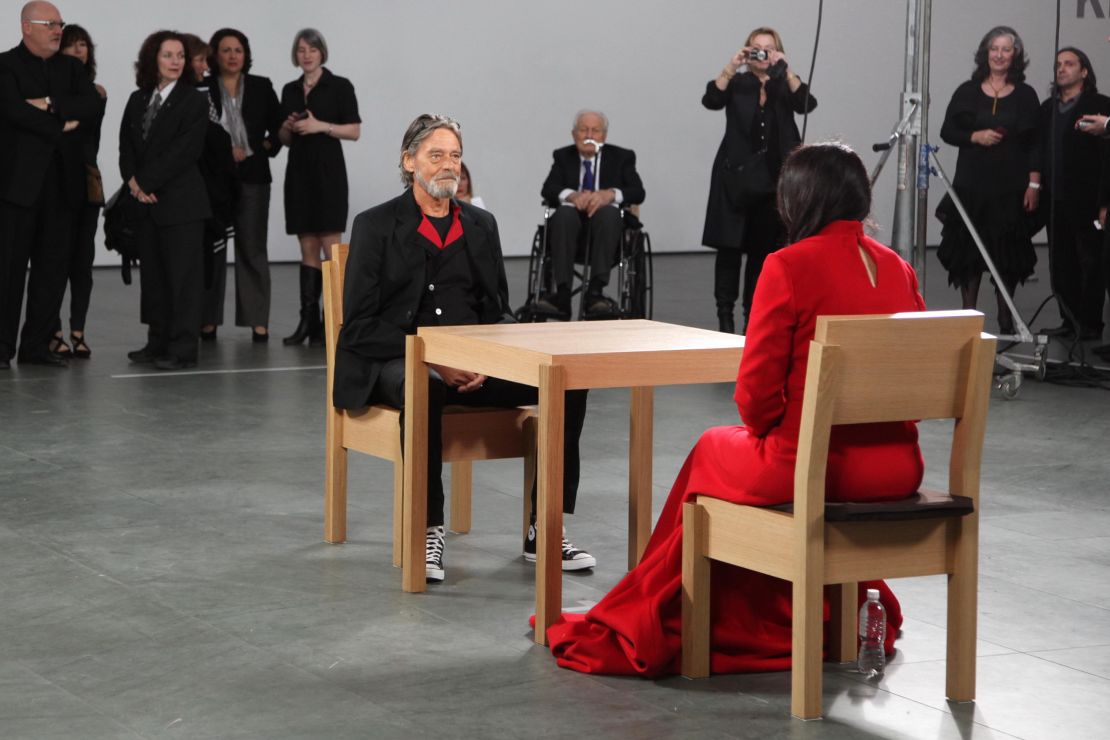
“I could see solitude; I could see pain,” Abramović said of the people who sat across from her. “I could see unhappiness. I could see happiness. I could see so many different emotions. Basically, you have nowhere to escape except your true self. And I could see it and you can see yourself.”
Abramović ended a tour of the exhibition by showing Amanpour the deeply personal work that won her a Golden Lion award at the Venice Biennale in 1997. Created in response to the Balkan wars, “Balkan Baroque” saw the artist scrubbing a sea of bloody cow bones with a metal brush for four days. The idea, she said, was “to create a metaphor that this can be in any war, anywhere.”
“Palestinians, Israelis, Ukrainians, Russians — they’re all here in this room,” she concluded.
